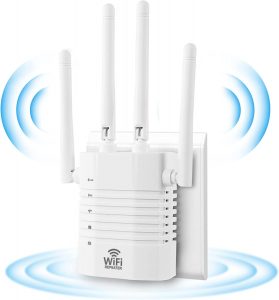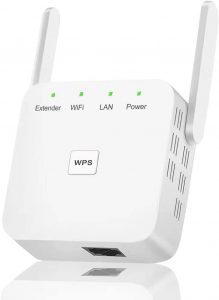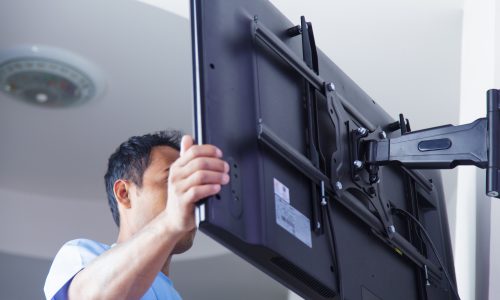The Best Wi-Fi Booster
We looked at the top 9 Wi-Fi Boosters and dug through the reviews from 13 of the most popular review sites including and more. The result is a ranking of the best Wi-Fi Boosters.

Our Review Process
Don't Waste Your Money is focused on helping you make the best purchasing decision. Our team of experts spends hundreds of hours analyzing, testing, and researching products so you don't have to. Learn more.
Our Picks For The Top Wi-Fi Boosters
- 1. TP-Link AC750 Dual Band Wi-Fi Booster
- 2. Macard CRYO360 5 Modes Long Range Wi-Fi Booster
- 3. BIGtec AC15-BK Safe Heat Dissipation Wi-Fi Booster
- 4. Camaay 4 Antennas Low Latency Wi-Fi Booster
- 5. AOOEPU One-Tap Setup High Speed Wi-Fi Booster
- 6. EJRR 2 External High-Gain Antennas Wi-Fi Booster
- 7. EJVV Built-In Ethernet Port Wi-Fi Booster
- 8. Macard Dual Band & Ethernet Port Wi-Fi Booster
- 9. MEESTORY 2.4Ghz Processor 3 Modes Wi-Fi Booster
With a 1200 foot range, this booster is ideal for small to medium sized homes. It makes "dead zones" disappear with a minimum of fuss and can run on dual frequencies. The installation can be done by anyone since most of the configuration process is automated.
Simple Set UpThis compact unit is a breeze to install.
If you need internet access in isolated areas, this range extender is worth the extra setup time. It can also let you use more devices thanks to the extra Ethernet ports. It's especially effective at routing your signal around thick walls while keeping speeds up.
Heavy Duty BoosterUse this to boost your signal into remote areas.
Whatever your issue is with weak wi-fi, this device can likely help. You can use AP mode to create wireless access from a wired network or repeater mode to boost your existing signal. The range is impressive and setup is relatively simple.
Multiple Coverage ModesThis booster is safe and easy to use.
Thanks to a 3-level signal indicator, you can quickly tell where to place this booster for maximum effectiveness. Setting it up takes just a few minutes and opens up internet access widely, even in larger homes. The dual band access ensures fewer signal drops.
No More LagsYou can easily find the perfect setup spot with this compact extender.
Buying Guide
For many, a modern home doesn’t feel like home until the internet router is up and running. There are few things more satisfying than seeing those tiny lights turn on and knowing you can hook up the smart TV and all your other gadgets. And all too often, the letdown comes soon after that, when you discover those pesky “dead spots” where your wi-fi signal is weak or nonexistent.
It can be tempting to fix the problem the expensive way with a deluxe router or mesh router system, and your internet provider probably won’t discourage you. But there is a cheaper solution: A wi-fi booster.
These compact devices are also called wi-fi range extenders or repeaters, but they all work on the same principle. They wirelessly pick up the signal from your internet router and rebroadcast it to areas of your house where appliances or thick walls may have been blocking the transmission. They won’t work as well as a good mesh router system (which is essentially several routers working in concert) but they’re a solid fix for those who need to boost their wi-fi to an upstairs office or outdoor security devices.
If you’re not technically inclined, make sure you get a wi-fi booster with WPS (wi-fi protected setup) capability. This allows you to simply press the WPS button on your router, then do the same with your booster and let them pair up remotely. Keep in mind that if you’re using an older router that runs on a WEP security protocol, WPS may not be an option.
Speaking of compatibility, check to see if your router is one of the newer models that’s capable of Wi-Fi 6 ( a next-gen network protocol that started rolling out in 2019). If so, it can provide you faster internet speeds, and you’ll want a booster that’s also Wi-Fi 6 enabled so it won’t throttle that capability.
Of course you’ll want a booster with a lot of range, but the real thing to worry about is speed. Many older single-band boosters could extend your wi-fi into previously “dead” areas, but the process would cut your signal speed in half. Most modern boosters operate on a dual frequency band, which mitigates that loss. If you’re able to pay a little more for a tri-band booster, you’ll have that benefit and the ability to connect more devices.
The frequency type of your router (and your booster) also makes a big difference. Of the two main types, 2.4 GHz routers will have a wider coverage area at the cost of slower speed. 5 GHz is basically the opposite, with more bandwidth up close but smaller coverage.
You’ll have to take all these factors into account and weigh them against what you want to achieve with your booster. If you want to simply extend your range so that you’re able to walk through the house without dropping calls, you can get away with a cheaper booster. If you want to set up an office far from your router, make sure to get a booster with some extra Ethernet ports so that you can connect a printer and other peripherals.
Why we recommend these wi-fi boosters?
Products Considered
Products Analyzed
Expert Reviews Included
User Opinions Analyzed
Our experts reviewed the top 9 Wi-Fi Boosters and also dug through the reviews from 13 of the most popular review sites including and more. The result is a ranking of the best of the best Wi-Fi Boosters.
DWYM is your trusted roduct review source. Our team reviews thousands of product reviews from the trusted top experts and combines them into one easy-to-understand score. Learn more.
What to Look For
Each wi-fi booster will have its own installation directions, but every home is different. A lot of things can affect the performance of both your router and your booster, so where you place them can be just as important as which ones you buy.
If you’re simply looking to extend your range, the best place for your booster is somewhere centrally located within the house. If you have a particular “dead zone” you want to get rid of, don’t place it in that area. Your booster needs to pick up the signal to begin with, so it must be in a place where the wi-fi is already strong.
If you have a specific smart TV or computer you want to reach, just place the booster roughly halfway between your router and that device. Most boosters come with a sensor that will tell you where the signal is strong, so don’t be afraid to move around until you find a sweet spot.
More to Explore
We’re still adjusting to the wireless age, with new innovations like cloud computing and the Internet of Things coming at us faster than we can find uses for them. It’s hard to believe, then, that a humble inventor saw wi-fi technology coming way back in 1926. That’s the year Nikola Tesla was quoted in a Collier’s magazine interview, musing about the applications for wireless communication.
“Through television and telephony we shall see and hear one another as perfectly as though we were face to face, despite intervening distances of thousands of miles,” Tesla said, “and the instruments through which we shall be able to do this will be amazingly simple compared with our present telephone. A man will be able to carry one in his vest pocket.”






















